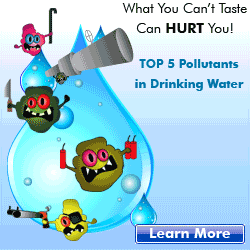
- The TRUTH About America's Water
- Water Pollutants that Cause Illness
- Are Minerals in Water Important for Health?
- Top 5 Drinking Water Contaminants
- Do I Need a Whole House Water Filter?
How does a Consumer Confidence Report (CCR) get distributed to the public?

You may have heard of your water utility participating in a quality checklist, or a 'report-card' on their water quality and wondered what it is. The report is called a Consumer Confidence Report, or CCR for short.
What is a Consumer Confidence Report? The 1996 Safe Drinking Water Act Amendments require that, beginning in October 1999, all community water systems provide customers with an annual report on the quality of their drinking water. The law calls this report a Consumer Confidence Report.
Demonstrating its commitment to public health protection and the public's right-to-know about local environmental information, the U.S. Environmental Protection Agency (EPA) requires community water systems to put annual drinking water quality reports into the hands of their customers. These reports (also known as consumer confidence reports), which EPA developed in consultation with water suppliers, environmental groups, and the states, will enable Americans to make practical, knowledgeable decisions about their health and their environment.
While water systems are free to enhance their reports in any useful way, each report must provide consumers with the following fundamental information about their drinking water:
- the lake, river, aquifer, or other source of the drinking water;
- a brief summary of the susceptibility to contamination of the local drinking water source, based on the source water assessments by states;
- how to get a copy of the water system's complete source water assessment; the level (or range of levels) of any contaminant found in local drinking water, as well as EPA's health-based standard (maximum contaminant level) for comparison;
- the likely source of that contaminant in the local drinking water supply;
- the potential health effects of any contaminant detected in violation of an EPA health standard, and an accounting of the system's actions to restore safe drinking water;
- the water system's compliance with other drinking water-related rules;
- an educational statement for vulnerable populations about avoiding Cryptosporidium;
- educational information on nitrate, arsenic, or lead in areas where these contaminant may be a concern; and
- phone numbers of additional sources of information, including the water system and EPA's Safe Drinking Water Hotline (800-426-4791).
So how do you get your hands on a copy of the CCR? You should already have received one. By law, one copy of the report must be mailed to each customer, unless the governor of a state has waived the mailing requirement for community water systems serving fewer than 10,000 persons.
Systems for which the mailing requirement has been waived must:- Inform their customers that the report will not be mailed;
- Publish the report in one or more local newspapers serving the area in which the system is located; and
- Make the reports available to the public upon request.
A further exception may apply to systems serving 500 or fewer persons, which may forego publication of the report in a local newspaper if they provide notice by mail, door-to-door delivery, or posting in an appropriate location that the report is available.





